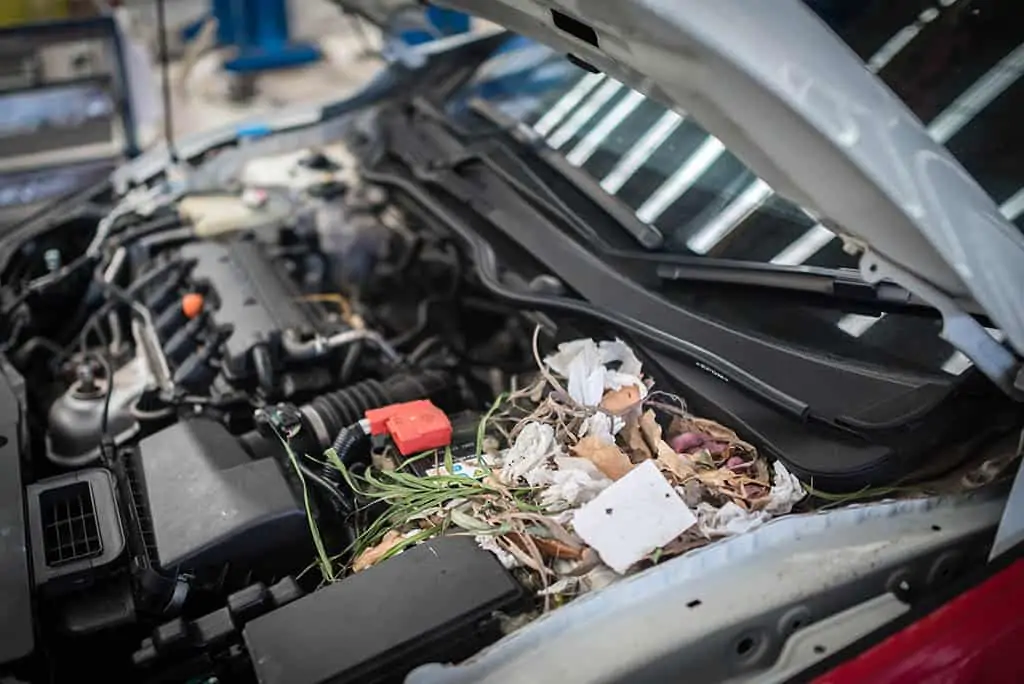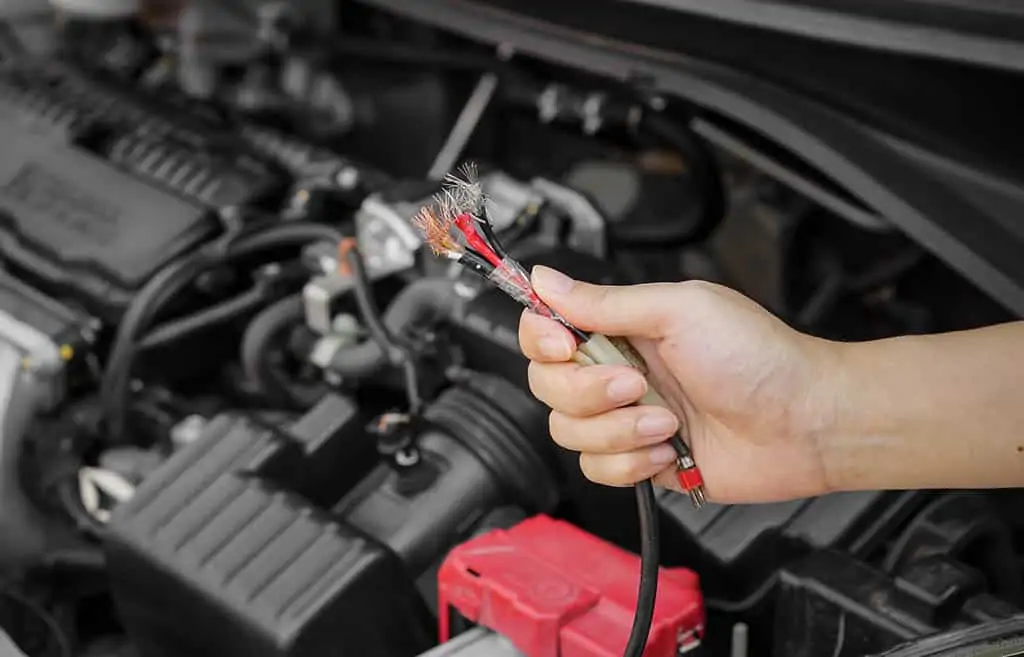Have rodents ravaged the wires in your vehicle, or are you worried that they’re setting up shop in the engine? In this article, you will learn what the warning signs look like, how to prevent rodent activity in the first place, and what you can do to address chewed-up wires in your car.
Transcript:
Have rodents caused damage to your vehicle? No. I don’t mean by an accident trying to avoid them.
Hi, I’m Nancy at Kneble’s Auto Service Center. Have you suddenly noticed symbols on your dash illuminated and not sure why? Living in South Jersey it’s not unheard of rodents, such as squirrels or mice crawling up into the engine and chewing on those wires.
We have seen entire wire harnesses chewed right through causing costly repairs. Gnawed wires can cause your emergency warning lights, your anti brake warning lights, and your four-way warning lights all to be illuminated. Quite even possibly your cruise control not operating and even possibly the vehicle not being able to start.
Now, in early 2000 the automotive industry, they decided to get smart and they wanted to be environmentally conscious and want to become less dependent on petroleum. This led to the use of bioplastics which are environmentally friendly and cheaper to produce.
These bio-plastics are soy-based products. The major problem found was the use of this material attracted rodents for a food source. There has been even a class action lawsuit against Toyota, Honda, Kia, and Hyundai for the use of these soy-based wiring materials.
Honda offered a fix, mouse deterrent tape. Now, for your vehicle that’s 2008 or newer, your wires could be coated with that soy-based product. Take a preventative measure. Here is a list of some preventative measures you can take.
Spray rodent defense spray, and that can be found on Amazon. This is an all-natural peppermint spray. So you spray it in the engine compartment. Now, that’s going to confuse the rodent by making it difficult to detect their urine.
See, Rodents use their urine to mark safe pass for food and et cetera. Spray your engine compartment three or four times a week and then decrease down to two to three times a week.
Place mousetraps, six in total. So you put them on the two front tires. What you’re going to do is you put a mousetrap in the front and the back of the front tire and on top of the front tire. This is going to prevent the rodent from climbing up the tire.
Now, remember, do it for both front tires. Another option is to shine a flashlight on each tire. So you place it on the ground and you turn it on during the night because rodents, they like to be concealed and they hate the light. This may deter them from climbing on the tire and entering into your engine compartment.
The final option is to place a fake owl on the ground for extra measure. So keep your vehicle from being the rodents next snack.
If you like the video, give it a thumbs-up, and remember to share the information by pressing the share button. And if you have a story that you’ve experienced this problem, let us know about it. Put it in the comment section. Thank you for watching.
Signs of Rodent Activity in a Vehicle
Keep an eye out for these common signs of rodent activity in a vehicle:
- Visible Mouse Nest: The most obvious sign of rodent activity in a vehicle is a full-blown mouse nest. Your engine’s airbox is prime real estate for mice, as it is warm and dry.
- Clogged Air Vents: Your car’s air vents are also very attractive living spaces for rodents. Clogged vents could indicate that a nest is forming and blocking airflow.

- Torn Upholstery: Are you noticing random patches of shredded upholstery in your car? Rodents may be using the materials from the vehicle’s seats as insulation for their nest.
- Mouse Droppings: This is another tell-tale sign of rodent activity. If you notice mouse droppings anywhere in or on your vehicle, they may have a nest hidden somewhere.
- Chewed Up Wires: By the time you notice this red flag, it could be too late. Rodents are known to eat soy-based wire insulation, and they even chew wires to sharpen their teeth. When rodents gnaw through wires, it commonly results in the need for electrical repairs.

How To Keep Mice Out of Your Car
Let’s examine some practical measures you can take to keep rodents far away from your car.
Mouse-Deterrent Tape
To address the issue of rodents filling their bellies with soy-based wiring insulation, Honda introduced mouse-deterrent tape. Mouse-deterrent tape uses capsaicin, the “spicy” component of chili peppers, to make wires unappealing to rodents.
Just wrap any potential problem areas of wiring with some mouse-deterrent tape, and you shouldn’t have to worry about rodents gnawing at your wiring anymore. But that doesn’t mean they won’t move into the engine or air vents if there’s nothing stopping them!
Rodent Defense Spray
Rodent defense spray can help keep mice and other rodents away from your car altogether. When you spray this peppermint-based mist into your car’s engine, it becomes very difficult for rodents to detect the scent of their urine. This will confuse rodents and deter them from staying.
Mouse Traps
If you’re dealing with a stubborn rodent that adapts to every preventive measure you’ve taken, it could be time to go with the nuclear option. Place three mouse traps on each of the front tires — one on the front, one on the back, and one on the bottom. The objective here is to cover all access points that the mouse can use to make it into your car’s engine.
Fake Owl
Since owls are natural predators of mice, placing a fake (but convincing) owl on the ground near the front of your car may scare away unwanted rodent guests. You can buy fake owls designed specifically for this purpose from home improvement stores and a number of online retailers.
Need Help Addressing Electrical Damage in Your Vehicle?
Has your vehicle been victimized by rodents so severely that you need repair services? Fear not, as the friendly experts at Kneble’s Auto in Mays Landing have dealt with issues like this before. We can quickly address damaged wiring in your vehicle and remove your unwanted guest’s belongings. Just schedule an appointment and let us know how we can help!

 Four Issues Your Car is Having That May Require a New Muffler
Four Issues Your Car is Having That May Require a New Muffler